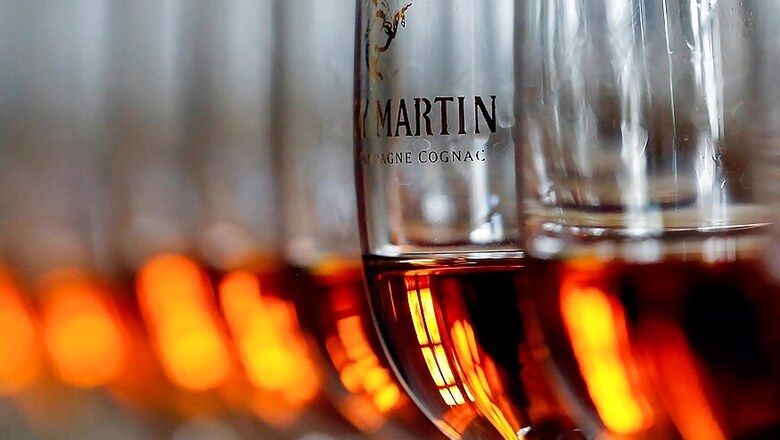
views
 Alchemists were people who had child-like fantasies.
Alchemists were people who had child-like fantasies.
In the way that children would like to see wheels under everything stationary so that they could trundle it around, alchemists had way back taken a fancy to burning or boiling everything around them down. They thought something would one day either turn into gold or the potion of immortality.
So when they got wine, the fermented essence of grapes, alchemists didn’t think twice. They made the concentrate. Hmm... bitter, but they liked the peppy feeling, so they counted that this could be some sort of medicine.
When the moors plundered Spain in the 8th century, they had much fun boiling the local Spanish wine to extract its essence. The invaders did not stay there for long. When they finally left the country, the art of making this brandewijn (burnt wine) went with them.
But not all had forgotten the technique.
A few monasteries had already begun to distil wine, and by the 13th century, a papal doctor got wind of this magic potion which was rumoured to prolong life.
The Pope sent his men.
By the 14th century, many people knew about the Pope’s health drink, the popularity of burnt wine grew, fetching much tax revenue. But remember one thing. We are still talking about a medicine, not the popular spirit called, brandy.
It took a few more centuries for mankind to discover the real potential of distilled wine. In the 13th century, the Dutch traders were busy at European seaports loading their ships with salt. Whenever space allowed, they loaded their barges with wine from France. But there was a problem with such wine. The fermented grapes would not last long during sea voyage. It turned acidic and unpalatable and before long turned itself into vinegar.
What to do now?
They only had to take a leaf out of the Arab alchemists for a solution – burn it down. The problem was solved by boiling down the wine to extract its quintessence. The advantage was that the burnt wine took less cargo space. And once it reached its destination, it only needed a liberal thinning down to get back the old wine.
By that time, France had already become the cradle of good wines. The kind of grapes grown in the Bordeaux region was considered supreme for making wine. But there was an ugly duckling in the region: wines from the region of Cognac. Sharp and flavourless, it also had the most horrible weakness – low alcohol content. The only thing working for wines from the region was their proximity to a seaport. So a large part of the wine that travelled in Danish cargo ships all over Europe was a distillate made from the insipid Cognac wines.
The wine was bland, they knew.
When the cellars were prized open in other ports of Europe after long voyages, the traders had a surprise waiting for them. They found that it was impossible to water the condensed wine without killing a wonderfully new taste the burnt wine had acquired with the long voyage.
How could this be!
The raw distilled wine, before it was barrelled at French seaports was bitter, no doubt about that. But something had happened during the voyage. The drink could have undergone a change in taste while it patiently sat inside the barrels as the ships pitched over the turbulent waters, they presumed. The wood yielded its essence to the wine, making it mellow and sweet.
Soon, they were in for a second surprise.
The traders found that the third-rate wine from the Cognac region yielded a stellar drink, much more superior than the brandy made from other popular wines.
It was the birth of a legend, the Cognac.
Brandy is simply distilled grape wine, which has meditated inside a barrel for a long time, mellowing.
Even though most brandies are made by distillation, there are exceptions to this rule. If you go to countries where grape cultivation is rare, you may come across fruit brandies (It is possible to make brandies from anything that has sugar in it). Apples, peaches, apricots, plums, cherries, and many other berries yield fine brandies around the world.
Fruit brandy is often drunk chilled over the ice but brandy made from grapes need special care. If it is some superior brand, don’t try to mix it with anything else. Soda and fruit juices do not sync well with brandy, as it is a derivative of wine. Drink neat. If it is some inferior brand, you are allowed to wash out the bitterness with some juices.
Ladled into a snifter glass, the drink needs the warmth of your hand to unlock its hidden flavours and the best of your moods for imagination. Now sip slowly.
(Manu Remakant is a freelance writer who also runs a video blog - A Cup of Kavitha - introducing world poetry to Malayalees. Views expressed here are personal)


















Comments
0 comment